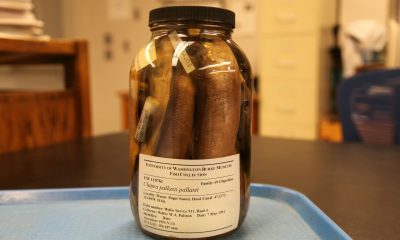By Gwyn Wright via SWNS
Gum bacteria can trigger high blood pressure in older women, warns new research.
Ten types of gum bacteria are associated with a 10 to 16 percent higher risk of developing high blood pressure among older women, according to the findings.
Five other kinds of mouth bug were linked to a nine to 18 percent lower risk of high blood pressure.
via GIPHY
The findings held after demographic, clinical and lifestyle factors such as age, cholesterol, diet and smoking were taken into account.
When the potential links between high blood pressure risk and the same 15 bacteria were analyzed- and women who were older and younger, smokers and non-smokers and people with normal and high blood pressure were compared, the results remained consistent.
High blood pressure is typically defined by two measurements- systolic blood pressure, which measures pressure when the heart beats, and diastolic blood pressure- which measures pressure between heart beats.
Researchers have long known people with gum disease have higher blood pressure than people who do not, but the researchers say their study is the first to examine the association between oral bacteria and developing high blood pressure.
For the study, the academics looked at data for 1,215 American postmenopausal women.
They had an average age of 63 and enrolled in the study between 1997 and 2001.
When they enrolled, the researchers took their blood pressure and collected oral plaque from below the gum line.
Below the gum line is where some bacteria keep the teeth and gums healthy while others cause gum disease.
They also looked at what medicine participants used and their medical and lifestyle histories to build up a picture of whether there is a link between gum bacteria and high blood pressure in women.
When the women enrolled in the study, 35 percent of them had normal blood pressure and were not using any medicine to control it.
Nearly 24 percent of them were being treated for high blood pressure but were not taking any medication.
Around 40 percent of them were being treated for high blood pressure, also known as hypertension, with medication.
The academics found 245 unique strains of the bacteria in the blood samples.
Almost one third of the women who did not have high blood pressure at the beginning developed it during the follow-up period, which averaged 10 years.
They found 10 bacteria were associated with a 10 to 16 percent higher risk of developing high blood pressure while five other kinds of bacteria were associated with a 9 to 18 percent lower high blood pressure risk.
The researchers said their findings were particularly relevant for older women as older women are more likely than older men to have high blood pressure.
High blood pressure is a major risk factor for heart attacks and strokes.
The study’s authors said they could not prove the gum bacteria caused high blood pressure and could only show they were linked.
Study senior author Dr. Michael LaMonte said: “Since periodontal disease and hypertension are especially prevalent in older adults, if a relationship between the oral bacteria and hypertension risk could be established, there may be an opportunity to enhance hypertension prevention through increased, targeted oral care.”
Dr. Willie Lawrence, chair of the American Heart Association’s National Hypertension Control Initiative’s Oversight Committee added: “We have come to better appreciate that health is influenced by more than just the traditional risk factors we know to be so important.
“This paper is a provocative reminder of the need to expand our understanding of additional health factors that may even be influenced by our environments and potentially impact our biology at the endothelial level.
”Inclusive research on hypertension must continue to be a priority to better understand and address the condition.
The findings were published in the Journal of the American Heart Association.

 Parenting1 day ago
Parenting1 day ago
 Broadcast3 days ago
Broadcast3 days ago
 Broadcast1 week ago
Broadcast1 week ago
 Funny1 week ago
Funny1 week ago
 Broadcast2 days ago
Broadcast2 days ago
 Shopping1 week ago
Shopping1 week ago
 Money3 days ago
Money3 days ago
 Parenting1 week ago
Parenting1 week ago






















